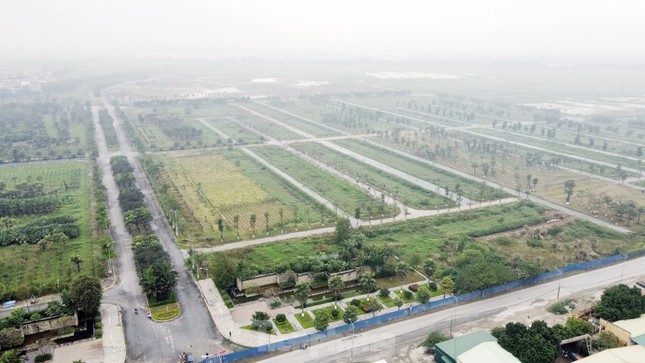The Ho Chi Minh City Real Estate Association (HoREA) has recently sent a document to the Prime Minister and the Ministry of Planning and Investment on “Contributing opinions to the draft Decree detailing a number of articles and measures to implement the Bidding Law on selecting investors to implement investment projects using land assets.”
It is noteworthy that HoREA proposes to clearly differentiate between “bidding for projects using land assets to select investors” with “auctioning the right to use land” and “bidding to select contractors for construction works”. The most significant difference in “bidding for projects using land assets to select investors” is to select the best qualified investors. First of all, they must have the best financial capacity, come up with the most feasible project plan, solution, progress and implementation schedule amongst the bidding investors.

HoREA proposes to make a clear distinction between bidding and auctioning.
According to HoREA, both methods of “bidding for projects using land assets to select investors” and “auctioning the right to use land” have the same purpose, which is to “select the most competent investor,” but each method has additional specific distinct objectives.
The purpose of “auctioning the right to use land” is to select the investor offering the highest bid or, in other words, to “sell” the right to use land at the highest possible price in order to generate revenue for the state budget.
On the other hand, the purpose of “bidding for projects using land assets to select investors” is to select the highest quality investment project that will deliver the greatest socio-economic benefits and to select the most qualified investors, particularly in terms of financial capability and the most effective, practical plan, solution, and progress amongst the bidding investors.
HoREA also noted that under the provisions of the 2024 Land Law, investors can only negotiate to acquire the right to use residential land or land currently in use or residential land and other land to carry out commercial housing projects. It can be said that implementing the method of “bidding for projects using land assets to select investors” is a key, viable, and primary method for investors to conduct large-scale urban and commercial housing projects.
This is because, under a mechanism similar to public-private partnerships, the winning bidder provides capital for the competent state agency to carry out compensation, support, and resettlement activities. According to the stipulations of the 2024 Land Law, within 36 months from the date of the decision recognizing the winning bid result or another deadline specified in the contract signed with the competent state agency, the competent-level People’s Committee must complete the compensation, support, and resettlement activities in order to hand over the land and lease it to the winning bidder.
Additionally, HoREA recognizes that the method of “bidding for projects using land assets to select investors” is carried out in two scenarios: the first is when plots of land or land areas already have a detailed 1/500 planning, and the second is when plots of land or land areas only have a 1/2000 zoning plan.
In the case of plots of land or land areas with detailed 1/500 planning, the construction planning criteria have already been defined in considerable detail, thus limiting the opportunities for investors to exhibit originality in the development of their investment projects for bidding purposes.
In the event that the plot of land or land area only has a 1/2000 zoning plan, investors have more latitude to display creativity in the development of their investment projects for bidding purposes.
Therefore, there are several specific objectives for “bidding for projects using land assets to select investors” that are distinct from those for “auctioning the right to use land,” notably in cases where land plots or areas just have a 1/2000 zoning plan.
First and foremost, it is to select a project with the highest quality, best design, and architecture, optimal land utilization, and greatest socio-economic impact while meeting green and circular economy norms.
Secondly, it is to choose the most skilled investor, who must demonstrate financial strength as well as the most feasible project plan, solution, and timeline amongst the bidding investors.
Thirdly, it is to select the investor who proposes the highest compensation, support, and resettlement costs (if any).
Fourthly, it is to select the investor who proposes the highest payment to the state budget in accordance with the bidding documents and voluntarily offers the highest additional payment to the state budget beyond what is required by the bidding documents (if any).
In addition, HoREA identified variances between “bidding for projects using land assets to select investors” and “bidding to select contractors for construction works.” However, because the draft Decree includes similar provisions on experience criteria or technical proposal requirements, or technical evaluation criteria for selecting investors to carry out projects using land assets, with evaluation scores for capacity and experience accounting for 20% to 30% of the total score, which is similar to the criteria for “bidding to select contractors for construction works,” these provisions are deemed inappropriate and inconsistent with the particular circumstances of “bidding for projects using land assets to select investors.”
This is because the most critical aspect of implementing the method of “bidding for projects using land assets to select investors” is evaluating two key criteria: first, assessing the investor with the greatest capacity, particularly in terms of financial strength; and second, assessing the investor who proposes the most feasible project plan, solution, and progress implementation schedule amongst the bidding investors.








































